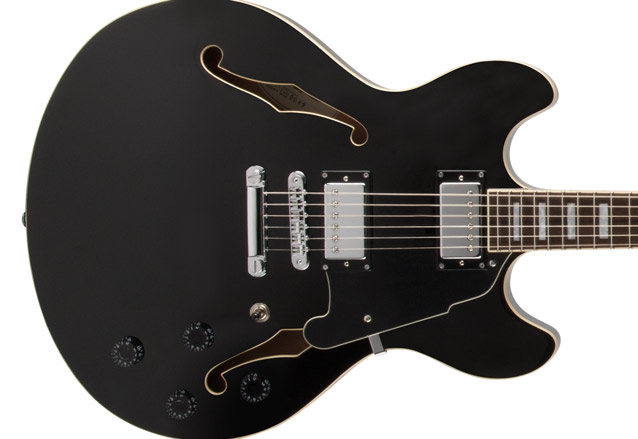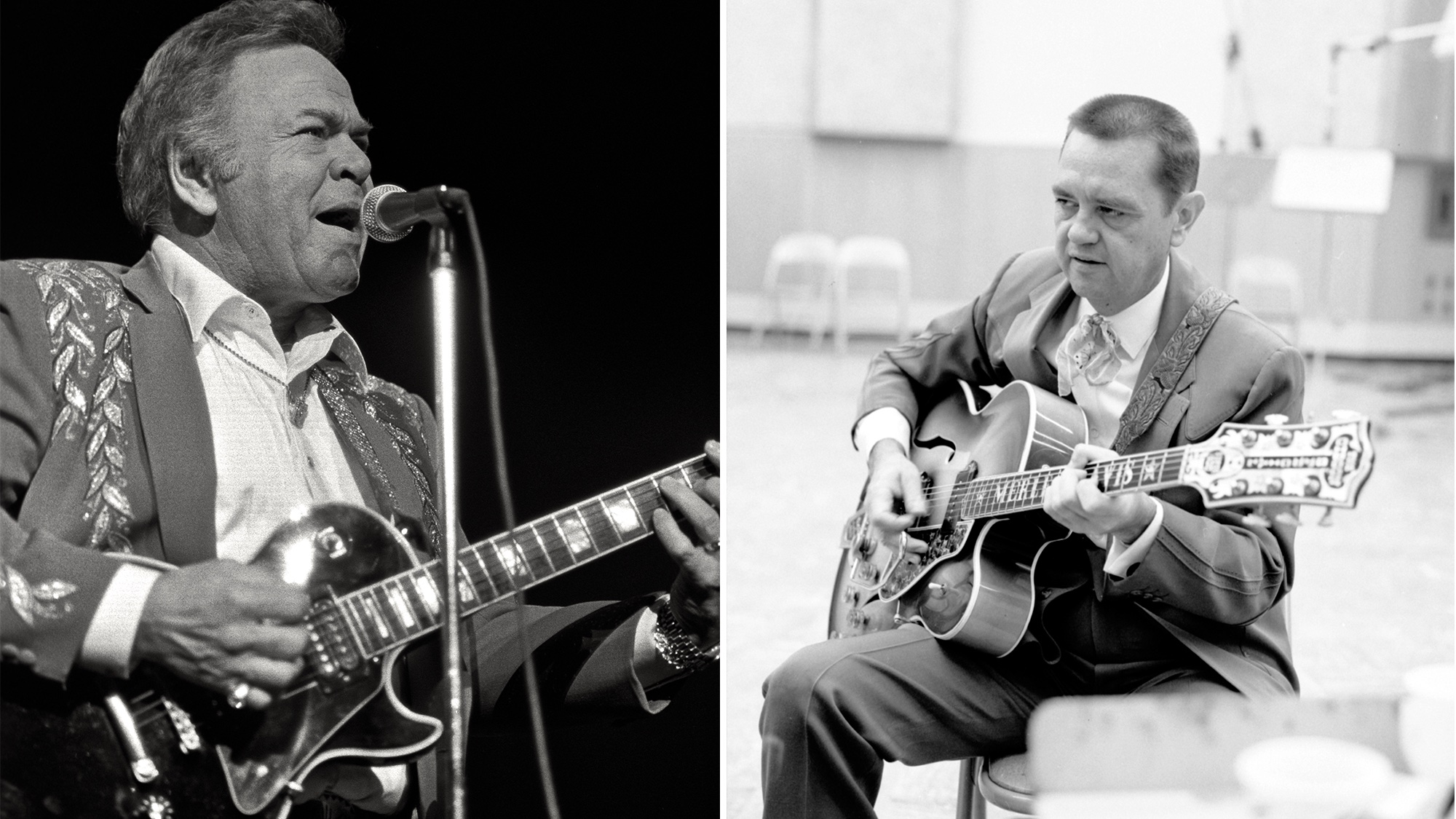Review: D’Angelico Guitars Premier Series

GOLD AWARD
Way back in the Golden Age of jazz (we’re talking about the Thirties through the late Fifties), a D’Angelico guitar was the guitarist’s equivalent of a Rolex watch or a Mercedes-Benz.
It was an expensive status symbol instrument that proved you were a “made man” who probably had a high-paying gig at the Copacabana where you were handsomely tipped by Jimmy Goodfella and his wiseguy pals. When old guitars suddenly became “vintage” in the late Seventies, D’Angelico guitars were amongst the most expensive and most coveted objects of desire.
The guitars offered by the recent reincarnation of the D’Angelico brand aren’t nearly as expensive as they were when a fussy little old Italian man crafted them from a workshop on Manhattan’s Lower East Side, but they still cost enough to be “aspirational” instruments for most players.
With the introduction of their new Premier Series guitars, D’Angelico now offers a wide variety of instruments that sell well below the $1,000 price barrier. Even more amazing is that the Premier Series guitars offer similar elegant styling, playability, and attention to detail as their more expensive predecessors.
The D’Angelico Premier Series consists of nine different models that include various semi-hollow and solidbody guitars as well as a true hollowbody. We took a look at a single-cutaway, semi-hollow Premier SS (PSFBSSSP) and a double-cutaway, semi-hollow Premier DC (PSDCSP) to see how they compare to previous D’Angelico models we know and love.
FEATURES
Our Premier SS and Premier DC models share numerous features in common, so first I’ll describe the features of each that aren’t the same. The Premier SS PSFBSSSP has a very distinctive semi-hollow body design that measures 15 inches wide and 1.75 inches deep and has no f-holes. Its neck has a 25-inch scale length. The Premier DC PSDCSP has a shallower body (1.625 inches deep), greater width (16 inches), traditional f-holes, and a 24 ¾-inch scale length. It also has a stairstep-shaped floating pickguard, while the Premier SS has none.
Get The Pick Newsletter
All the latest guitar news, interviews, lessons, reviews, deals and more, direct to your inbox!
Beyond that, both models have identical features. The bodies are constructed of laminated maple and the necks have three-piece maple construction, 22 medium frets, rosewood fretboard, block pearloid inlays, and a shallow C-shaped profile. Characteristic D’Angelico styling includes the signature fancy large headstock with decorative cupola, aluminum skyscraper truss rod cover, and chrome-plated Rotomatic stairstep tuners. Our examples both have stop tailpieces, but D’Angelico offers the trapeze chrome stairstep tailpiece as an option.
Electronics on both models consist of a pair of D’Angelico humbuckers each with their own volume and tone controls plus a three-postion pickup selector switch. Hardware includes a Tune-o-matic bridge, black speed knobs, and an EG-2P output jack.
PERFORMANCE
The biggest differences I noticed between the Premier Series guitars and D’Angelico’s previous Standard and Deluxe Series instruments are that the hardware is chrome-plated instead of gold-plated, the knobs on the Premier Series guitars aren’t as fancy, and the binding and various other decorative elements are slightly more plain. There are also fewer finish options to choose from—each Premier Series guitar is available with a choice of either a black, white, or wine finish.
However, if I were to take a blindfolded test drive I don’t think I’d notice much of a difference between the two different series, if any. The attention to detail in the construction of both Premier Series guitars is impressive, and the playability is identical to previous new D’Angelico guitars I’ve reviewed.
The Premier SS PSFBSSSP is a powerful rock and roll animal that delivers fat, dynamic tone with signature semi-hollow resonance and aggressive midrange, but the completely closed top allows players to rock harder and louder without feedback.
The Premier DC PSDCSP is a classic double-cutaway semi-hollow guitar through and through, with tone that works for pretty much any style of music where an electric guitar is welcome. While the D’Angelico humbuckers may not be quite as “refined” as the Kent Armstrong pickups featured on D’Angelico’s more expensive models, they have their own attractive personality that some players will probably prefer. The Premier Series guitars are the most affordable D’Angelico guitars ever, making the distinctive D’Angelico sound and style available to pretty much everyone.
MAP: $750
MANUFACTURER: D’Angelico Guitar, dangelicoguitars.com
• Most Premier Series models are available with a selection of either a traditional stop bar tailpiece or the fancier stairstep trapeze tailpiece.
• Signature D’Angelico styling includes the stairstep truss rod cover and Rotomatic tuners and the fancy headstock shape.
• The PSFBSSSP features a 15-inch single-cutaway semi-hollow body and a completely closed (no f-holes) top that eliminates feedback.
• The PSDCSP has a classic 16-inch double-cutaway semi-hollow and dual-humbucker design that makes it ideal for any style of music.
THE BOTTOM LINE
D’Angelico’s new Premier Series guitars make a new D’Angelico guitar more affordable without sacrificing the construction, playability, sound, and style that made D’Angelico guitars so desirable in the first place.
Chris is the co-author of Eruption - Conversations with Eddie Van Halen. He is a 40-year music industry veteran who started at Boardwalk Entertainment (Joan Jett, Night Ranger) and Roland US before becoming a guitar journalist in 1991. He has interviewed more than 600 artists, written more than 1,400 product reviews and contributed to Jeff Beck’s Beck 01: Hot Rods and Rock & Roll and Eric Clapton’s Six String Stories.
“My brother's trying to knock Norm down in price. He's worth $800 million. He goes, ‘I'll give you a bottle of whiskey on top’”: Frank Stallone on the prized vintage Epiphone that Sylvester bought him – and the guitar's mysterious origins
“More people play stop-tails than guitars with locking tremolos. We dig both”: EVH delivers on its hardtail promise and launches the Wolfgang Standard T.O.M. – which vows to take Eddie's legacy to new heights










![[from left] George Harrison with his Gretsch Country Gentleman, Norman Harris of Norman's Rare Guitars holds a gold-top Les Paul, John Fogerty with his legendary 1969 Rickenbacker](https://cdn.mos.cms.futurecdn.net/TuH3nuhn9etqjdn5sy4ntW.jpg)